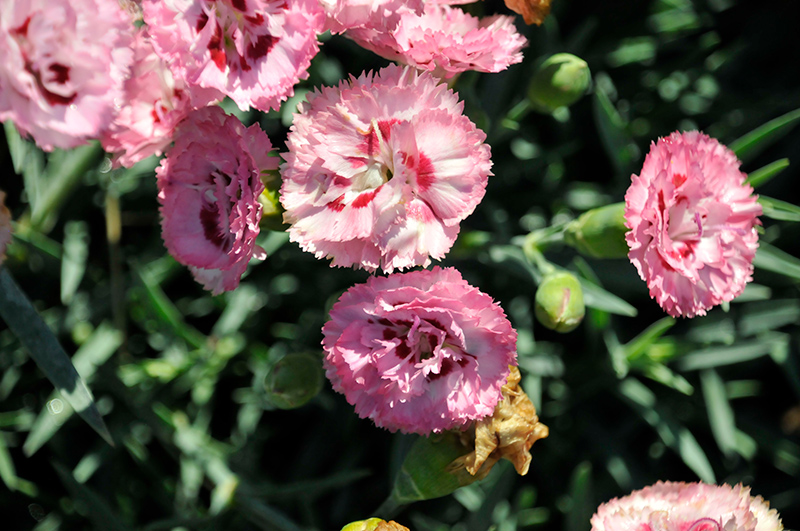Pretty Poppers® Appleblossom Burst Pinks
Description
White flowers with an intense pink blush, above mounds of fine blue-green foliage really get attention; great for flower arrangements; deadhead to rebloom; pair up with summer blooming perennials and annuals to time a continued flower display
Landscape Attributes
Pretty Poppers® Appleblossom Burst Pinks is an herbaceous annual with a mounded form. It brings an extremely fine and delicate texture to the garden composition and should be used to full effect.
Pretty Poppers® Appleblossom Burst Pinks is recommended for the following landscape applications;
Planting & Growing
Pretty Poppers® Appleblossom Burst Pinks will grow to be about 8 inches tall at maturity, with a spread of 16 inches. When grown in masses or used as a bedding plant, individual plants should be spaced approximately 14 inches apart. Its foliage tends to remain low and dense right to the ground. Although it's not a true annual, this plant can be expected to behave as an annual in our climate if left outdoors over the winter, usually needing replacement the following year. As such, gardeners should take into consideration that it will perform differently than it would in its native habitat.
This plant should only be grown in full sunlight. It prefers to grow in average to moist conditions, and shouldn't be allowed to dry out. It is not particular as to soil type or pH. It is highly tolerant of urban pollution and will even thrive in inner city environments. This particular variety is an interspecific hybrid. It can be propagated by division; however, as a cultivated variety, be aware that it may be subject to certain restrictions or prohibitions on propagation.
Pretty Poppers® Appleblossom Burst Pinks is a fine choice for the garden, but it is also a good selection for planting in outdoor pots and containers. It is often used as a 'filler' in the 'spiller-thriller-filler' container combination, providing a mass of flowers and foliage against which the thriller plants stand out. Note that when growing plants in outdoor containers and baskets, they may require more frequent waterings than they would in the yard or garden.

